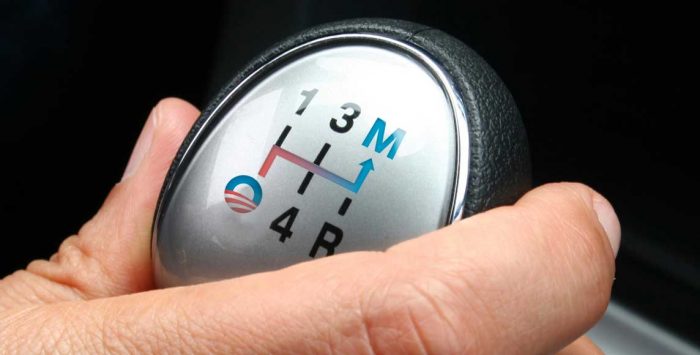For some people enrolled in individual market health coverage through a health insurance Marketplace/exchange, Medicare is just around the corner. And while people have been transitioning from individual coverage to Medicare for decades, the process changed a bit once the Affordable Care Act (ACA) was enacted.
Or call
866-472-0949 (TTY 771) to speak to a licensed insurance agent
(Mon-Fri 8am-9pm, Sat 10am-7pm ET)
If you’re already receiving Social Security or Railroad Retirement benefits, the government will automatically enroll you in Medicare Part A the month you turn 65, with your Medicare card arriving in the mail about three months before you turn 65.
If you’re not yet receiving Social Security or Railroad Retirement benefits, you’ll have a seven-month window during which you can enroll in Medicare, which you’ll do through the Social Security Administration. Your Medicare card will be sent to you after you enroll.
Your enrollment window starts three months before the month you turn 65, includes the month you turn 65, and then continues for another three months. Note that you’ll need to enroll during one of the months before your birth month to have coverage that takes effect the month you turn 65. If you enroll during your birth month or one of the three following months, your Part B coverage will take effect the month after you enroll; your effective date for Part A will only be delayed if you have to pay a premium for Part A. (Note that before 2023, there was more of a delay for Part B when people enrolled after turning 65, but that is no longer applicable.)
Most people pay no premiums for Medicare Part A, based on immigration status and work history. Medicare Part B has a monthly premium, as do Medicare Part D and Medigap.
Marketplace coverage can be non-renewed if you enroll in Medicare (but no automatic transition to Medicare Advantage)
Prior to 2014, coverage in the individual market generally terminated automatically when an enrollee reached age 65. Age was a limiting factor for enrollment – people 65 and over typically could not obtain coverage in the individual market, nor could they keep it once they reached 65, even if they were not eligible for Medicare.
That changed under the Affordable Care Act, so you’ll need to actively cancel your exchange coverage when you transition to Medicare. As we’ll discuss in a moment, this is important to avoid having to repay excess premium subsidies, since your subsidy eligibility ends once you’re eligible for premium-free Medicare Part A.
However, it’s also important to note that under federal rules that took effect in 2018, Marketplace insurers are required to not renew coverage for the coming year if they have knowledge that the person is already enrolled in Medicare. This means the policy will terminate at the end of the year if the insurer has information indicating that the policyholder’s Medicare coverage has taken effect (however, insurers “should not presume” that all enrollees 65 and older are covered by Medicare or have access to premium-free Medicare Part A).
If other family members are on the policy, they will have access to a special enrollment period allowing them to re-enroll without the Medicare-covered member on the policy. But in general, it’s easier to address this yourself, before the month that your Medicare starts.
Also under regulations that CMS finalized in 2018, insurers that offer individual market coverage along with Medicare Advantage coverage cannot automatically transition their individual market enrollees to their Medicare Advantage plan. Consumers can opt into this feature, but seamless automatic enrollment is only allowed when a person is already enrolled in the insurer’s Medicaid managed care plan and is going to be transitioned to a special needs plan for dual-eligible (Medicaid and Medicaid) enrollees.
Exchange subsidies end with Medicare eligibility (but can last for a few additional months, depending on when you enroll)
You are not required to cancel your exchange plan when you enroll in Medicare, but if you’re getting premium subsidies, they’ll end when you become eligible for premium-free Medicare (with some flexibility in terms of the exact date for this, as described below).
And if you keep your individual market exchange plan and don’t sign up for Medicare when you first become eligible, you’ll have to pay higher Medicare Part B premiums for the rest of your life, once you do enroll in Medicare, due to the late enrollment penalty. (You can delay Part B without a penalty if you have active employee coverage under a group health plan, but not if you have individual/family coverage.)
When you have coverage in the exchange — for the full year or only part of the year — your total premium subsidy amount for the year is based on your total income for that year relative to the federal poverty level (which determines the amount you’re expected to pay for the benchmark plan), and the cost of the benchmark plan in your area. This is explained in more detail here, and illustrated on Form 8962, which is the tax form that you use to reconcile your premium subsidy on your tax return after the year is over. So although your premium subsidy ends when you switch to Medicare, this does not affect the subsidy amount that you can receive for each of the months prior to that transition.
Because Medicare has a fairly long initial enrollment window, with varying effective dates depending on when you enroll, the exact date that your premium subsidy terminates will depend on when you enroll in Medicare. The details for this are clarified in a “Marketplace to Medicare” guide that CMS published in July 2020.
(Note that on page 9 of IRS Publication 974, Example 1, about “Ellen,” shows a scenario that differs from the CMS guide. After discussing this with the IRS Chief Counsel’s office, we feel fairly certain that the CMS guide, which was published much more recently, is correct. Example 1 about “Ellen” in IRS Publication 974 does not account for the fact that Ellen’s Part A coverage would be retroactive to the month in which she turned 65.
Premium subsidies would technically end at that point, but the provision applying to retroactive government coverage — described at the bottom of page 9 in IRS Publication 974 — would prevent Ellen from losing her premium subsidy until the end of the month in which she applies for coverage (or the month that the coverage is approved, which could potentially be a later month). In other words, Ellen wouldn’t lose her premium subsidy for the month she enrolled or the months before that. And this matches what’s in the recently published guidance from CMS, in the example about “Paul” on page 41.
CMS confirmed this in federal rulemaking that was finalized in 2024 to allow for retroactive Marketplace plan terminations in some cases where people are retroactively enrolled in Medicare. CMS notes that “Consumers who enroll in Medicare retroactively are not categorically excluded from PTC (premium tax credit) eligibility for the period of retroactive coverage, and thus may not be required to repay APTC for the months of overlap when they file their taxes, in accordance with 26 CFR 1.36B-2(c)(2)(iv).”
But we caution you to discuss this issue with an accountant if you’re receiving premium subsidies in the marketplace and are planning to enroll in Medicare in the latter portion of your initial enrollment period.)
The short story is that if you enroll in Medicare during your initial seven-month enrollment window, your transition to Medicare should be seamless, with subsidy eligibility continuing through the last day of the month prior to the month that your Medicare Part B coverage begins. But if you don’t enroll in Medicare at all during your initial enrollment window, your premium subsidies will end a few months after you turn 65. Here are the details:
- If you’re already receiving retirement benefits from Social Security or the Railroad Retirement Board, you’ll automatically be enrolled in Medicare with an effective date of the first of the month that you turn 65. As is the case for people who enroll prior to the month they turn 65, premium subsidy eligibility ends on the last day of the month prior to the month you turn 65.
If you’re not already receiving retirement benefits, you’ll need to enroll in Medicare.
- If you complete the enrollment process during the three months prior to your 65th birthday, your Medicare coverage takes effect the first of the month you turn 65 (unless your birthday is the first of the month). Your premium subsidy eligibility continues through the last day of the month prior to the month you turn 65.
- If you enroll during the month you turn 65, your Part B coverage will take effect the first of the following month. Part A will be backdated to the month you turned 65, assuming you’re eligible for premium-free Medicare. But according to CMS guidance, 26 CFR 1.36B-2(c)(2)(iv), and the retroactive government coverage rule in IRS Publication 974, your premium subsidy will continue through the month you enroll (which means you’ll get a premium subsidy for the month you turned 65, even though you also ended up with retroactive Medicare Part A for that month). You won’t get a subsidy starting the following month, but both parts of Medicare will be in effect by that point.
- If you enroll in Medicare during the three months following the month you turn 65, your effective date for Part B will be the first of the month following your enrollment (note that prior to 2023, there was a longer delay between enrollment and the Part B effective date). Assuming you’re eligible for premium-free Part A based on work history, your Part A coverage will be backdated to the month you turned 65. Based on the CMS guidance and the retroactive government coverage rule in IRS Publication 974, you should expect your premium subsidy to continue through the month that you enroll. Now that the rules for effective dates have changed, this helps to ensure seamless coverage, with a premium subsidy continuing through the month you enroll and Medicare Part B starting the following month.
- If you do not complete the enrollment process by the end of your enrollment window, your premium subsidy will end on the first day of the fourth month after the month you turned 65 (ie, the last month that your Part B coverage could have taken effect if you had enrolled during your initial enrollment window). So if you turn 65 in April but do not enroll in Medicare during your initial seven-month enrollment window (January to July, in this case), you’ll no longer be eligible for a subsidy as of August 1, as this is when your Medicare Part B coverage would have begun if you had enrolled at the very end of your initial enrollment period. The specifics of this are confirmed in both the CMS guidance (see the example for “Sally” on page 43) and Example 2 about “Ellen” in IRS Publication 974.
Can I keep my marketplace plan instead of Medicare?
Yes, although that’s probably not the best choice for most people. It can be a good choice, however, if you would have to pay a premium to enroll in Medicare Part A.
As described above, any premium subsidies in the exchange will end if and when you become eligible for premium-free Medicare Part A. And it’s illegal under the Social Security Act for anyone to sell you an exchange plan after you’re already eligible for premium-free Medicare Part A (and as noted above, insurers are required to not renew a Marketplace enrollee’s coverage for the coming year if they learn that the person has enrolled in Medicare).
However, you can purchase a plan in the exchange instead of Medicare if you would otherwise be required to pay premiums for Medicare Part A due to a work history that’s insufficient to qualify for premium-free Part A benefits. And if you’re already enrolled in a plan through the exchange and would have to pay a premium for Medicare Part A, you can opt instead to continue to receive a premium subsidy in the exchange, assuming you continue to meet the subsidy eligibility requirements.
Can I keep my marketplace plan in addition to Medicare?
You can — until if and when the insurer learns that you have Medicare and doesn’t renew your coverage for the coming year. But in virtually all cases, keeping your Marketplace plan along with Medicare would be a waste of money (and as noted above, you would no longer receive a premium subsidy for your Marketplace plan if you’re eligible for premium-free Medicare Part A). It’s important to understand that individual/family plans do not coordinate with Medicare the way employer-sponsored group plans do.
So your Marketplace plan would not function as secondary coverage. Instead, it simply would not be required to provide coverage at all if you also had Medicare coverage (small business plans sold through the SHOP exchanges do coordinate benefits with Medicare, since they’re employer-sponsored plans rather than individual market plans).
What you’ll need instead is a Medicare Advantage plan or a Medigap plan and Part D plan to supplement your Medicare coverage. Here’s a resource to help you figure out what would work best in your situation.
When you’re ready to cancel your exchange plan:
If you’re enrolled in a plan through HealthCare.gov, you can follow these directions for canceling your exchange plan so you can transition to Medicare. If you have other family members who need to keep their coverage, the Marketplace may have to cancel the whole policy and reissue a new policy for the other family members (the specifics may depend on whether you are the primary policyholder). In that case, you or your broker may also need to reach out to the insurance company (as opposed to HealthCare.gov) to make sure that any accumulated out-of-pocket costs for the remaining family members get properly credited to the new policy.
If you’re in a state with a state-run exchange, you’ll need to follow the steps outlined by your exchange. Regardless of what state you’re in, if in doubt, ask for help. Contact the exchange call center or your broker if you have one. Document the call and keep a record of your cancellation request.
Canceling your exchange coverage to switch to Medicare should be relatively simple, but we have seen cases where cancellation requests weren’t transmitted to the carrier in a timely manner. For that reason, it may be wise to switch from bank draft to paper billing prior to submitting your cancellation request. That way, if something goes wrong when the cancellation request is being processed, you won’t end up with premiums being auto-drafted from your bank account after your coverage was supposed to be terminated.
When should you cancel your plan?
The standard advice is to avoid any gaps in coverage. So if your Medicare will start August 1, you would schedule your exchange plan to terminate July 31. But while that’s undoubtedly the safest course of action, some people feel comfortable taking a gamble during their last month or two before Medicare kicks in, and they cancel their coverage early.
Be cautious about this approach if you have pre-existing conditions, however. If you’re going to enroll in Medicare A and B, you’re probably going to want a Medigap plan to supplement your coverage. Medigap plans are guaranteed issue during your initial six-month enrollment period, but they can impose a pre-existing condition waiting period if you’ve had a gap in prior coverage of more than 63 days.
Once you’ve taken steps to enroll in Medicare and schedule the cancellation of your exchange plan, take some time to familiarize yourself with the various coverage options that can improve upon the basic coverage provided by Medicare. And then enjoy your Medicare – you’ve earned it!
Louise Norris is an individual health insurance broker who has been writing about health insurance and health reform since 2006. She has written dozens of opinions and educational pieces about the Affordable Care Act for healthinsurance.org. Her state health exchange updates are regularly cited by media who cover health reform and by other health insurance experts.
Footnotes






